Imagine you had an assistant who was always available, deeply knowledgeable about your products and industry, and able to generate compelling sales copy, emails, and product descriptions at the drop. This assistant has an incredible memory, instantly recalling every customer interaction, competitive insight, and key product detail. And the truly amazing part? This tireless assistant works for you 24/7 and never asks for a day off or a raise. Sounds too good to be true, right? AI for sales is here. And if you’re in marketing, check this out, and no, ChatGPD isn’t going to take over.
Well, for salespeople in 2023, this “assistant” is real – and it’s called artificial intelligence (AI). AI is rapidly transforming the world of sales and marketing, giving reps superpowers to engage prospects, convert leads, and close deals faster than ever before. But as Spider-Man taught us, with great power comes great responsibility. Harnessing the power of AI requires skill, judgment, and a framework for success.
In this guide, I’ll walk you through everything you need to know to become an AI power user and take your sales game to the next level. We’ll cover the elements of effective AI prompts, best practices for developing your own prompts, real-world use cases, and the key pitfalls to avoid. By the end, you’ll be ready to partner with AI and achieve superhuman sales results. Let’s dive in!

Part 1: How to Use AI
At its core, AI is a tool that allows you to offload cognitive labor to a machine. You provide the goals, guidelines, and raw materials in the form of a prompt, and the AI does the hard work of analysis, writing, math, coding, or whatever else you need. The key is learning how to define the right instructions to get the output you want.
It’s like delegating a project to a new sales team member. If you toss them a one-liner—”Hey, go make some sales!”—you probably won’t get great results. But if you give them clear direction, examples, guardrails, and a vision of success, they can take the ball and run with it.
The same thing applies when working with AI. The more specific, detailed, and well-structured your prompts are, the better the output will be. Vague, open-ended prompts without clear instructions yield unfocused, generic, or irrelevant results.
Practically speaking, using AI in sales typically involves a few key steps
- Identify a task or project that could benefit from AI assistance, such as writing cold outreach emails, analyzing sales call transcripts, or generating ideas for overcoming common objections.
- Gather relevant background information and raw materials, such as examples of previous successful emails, key product/service details, customer research, etc.
- Craft a clear, detailed prompt that spells out your goals and gives the AI the necessary context and instructions to generate a great result. We’ll dive into the elements of a good prompt in the next section.
- Iterate and refine your prompt until you get an output you’re happy with. AI rarely gets it perfect on the first try, so be prepared to go back and forth a few times to dial in your prompt.
- Review the AI’s output carefully and apply your own judgment and expertise. Remember, AI is a tool to enhance your capabilities – not a replacement for your sales experience and critical thinking.
With practice, this process will start to feel natural, and you’ll develop a sense of how to consistently structure prompts to get strong results from AI. It’s a bit of an art and a science, so don’t be afraid to experiment.
Part 2: Elements of a Good Prompt
So, what separates a good AI prompt from a bad one? While the specifics will vary depending on your use case, there are a few universal elements that tend to lead to success.
Key points

- Clear objectives – Start your prompt by outlining your high-level goals and what you hope to achieve. Are you trying to book more intro calls? Write a compelling event invitation. Analyze competitor messaging. Giving the AI a north star will help ensure its output is relevant and useful.
- Relevant context – Remember, the AI only has background knowledge of what you provide in the prompt. So be sure to include any important context it will need – target audience, product/service details, previous interactions with the prospect, key deadlines, etc.
- Specific instructions – Spell out precisely what you want the AI to do – make sure to interpret everything. Break your request down into clear, actionable steps. Instead of “generate some ideas,” try “brainstorm 5 subject lines for a cold email to [audience] that [key benefit/hook].” The more specific, the better.
- Examples & inspiration – Providing examples of what you’re looking for can be hugely helpful in guiding the AI. If you’re writing sales emails, include a few previous emails that worked well. If you’re brainstorming positioning ideas, share some messaging from competitors. Concrete examples give the AI a clearer picture of your expectations.
- Dos and don’ts – If you want the AI to avoid any important guardrails or things, spell those out explicitly. For example, “Do not mention pricing,” “Avoid negative framing,” or “Focus on benefits X, Y, and Z.” This will help keep the AI coloring within the lines.
- Desired format – What format do you want the output in? A list of bullet points? A three-paragraph email? A table comparing features? Specifying the format upfront will prevent you from having to rework the output later.
- Iterative refinement – Remember, you can (and should!) go back and forth with the AI to refine your prompt and output. If the first draft isn’t hitting the mark, don’t be afraid to provide more examples, tighten your instructions, or ask the AI to try a different angle. You’ll often find that a little iteration leads to a much stronger final result.
Part 3: Developing Your Prompts
Keeping in mind the key elements of a strong prompt, let’s walk through the process of developing your own AI prompts for common sales use cases.
Use Case 1: Cold Outreach Emails
Scenario: You’re trying to book intro meetings with directors of IT at mid-size manufacturing companies to pitch your cybersecurity software. Here’s how you might approach the prompt:
Objective: Write a compelling cold email to book an intro call with a Director of IT to discuss our LastLine cybersecurity platform.
Context
- Prospect works at a $50-$100M manufacturing company
- Key concerns for manufacturing IT leaders: preventing production downtime from cyber-attacks, securing industrial IoT devices, complying with NIST standards
- LastLine platform uses advanced AI to detect novel malware, integrates with OT systems, has 99.9% uptime SLA
Instructions
- Grab attention with a surprising statistic or anecdote about cyber risks facing manufacturers
- Personalize the email with the prospect’s name and company
- Highlight 2-3 key benefits of LastLine that address their top concerns
- Include a clear call-to-action to book a 20min intro call
- Close with an easy 1-click Calendly link
- Email should be ~125 words, conversational but professional tone
- Avoid generic “sales-y” language
Example of a successful cold email

Hey [First Name],
I saw the news about the cyber-attack that forced [Major Auto Manufacturer] to halt production last month – scary stuff. Just thinking how [Prospect’s company] keeps your manufacturing lines and IoT devices secure.
I lead cybersecurity sales at LastLine, where we help manufacturers detect and block advanced malware that traditional tools miss. Our AI has caught over 500k novel threats in 2023, ensuring 99.9% uptime for production systems. ACME Co., another leading [industry] player, saw a 10x reduction in incidents after deploying LastLine.
Could we have a brief 20-minute call next week to discuss how LastLine can help keep [Company] secure and productive? My calendar is wide open on Tuesday, May X and Wednesday, May X.
Best,
[Your name]
Prompt
Use the background information provided to write a cold email meeting the objectives and instructions. Focus the email on how LastLine helps address the key concerns of IT leaders at mid-size manufacturing firms. Aim for a conversational but professional tone, and include a clear call-to-action to book an intro call with a Calendly link. Please generate 2-3 examples.
And there you have it! A clear, specific prompt that provides the AI with everything it needs to generate some compelling, personalized cold email copy. You’ll likely need a few iterations to dial it in, but this framework will get you 80% of the way there.
Feel free to use this template as a starting point for your own cold email prompts. Just swap in the relevant details about your product/service, target audience, key benefits, and desired call to action.
Other Use Cases & Ideas
Of course, AI can help with much more than just writing cold emails. Here are a few other common use cases and prompt ideas to spark your creativity:
- Analyzing sales call transcripts to identify top objections and effective rebuttals
- Generating ideas for personalized follow-up/break-up emails to revive stalled deals
- Writing email newsletters that educate prospects and soft-sell your product
- Summarizing key points from a long email thread with a prospect
- Identifying upsell/cross-sell opportunities among existing customers
- Brainstorming attention-grabbing hooks and angles for social media posts
- Researching prospects and drafting contextual talking points before a call
- Gathering competitive intel and distilling key takeaways
- Generating multiple meeting agenda options to propose to a prospect
The possibilities are nearly endless. The key is identifying parts of your sales process that are time-consuming, repetitive, or ripe for extra personalization – then crafting prompts to help streamline and enhance that work.
Summary
This guide covers a lot of ground—how to harness the power of AI in sales, the key elements of effective prompts, a step-by-step process for crafting your prompts, and a bunch of ideas to get your gears turning.
But I’ll leave you with one final thought. While AI can be an incredibly powerful tool for salespeople, it’s not a magic bullet. It will only solve some of your problems or do your job. The key to success with AI (as with sales in general) is to treat it as a partnership.
You bring your deep customer knowledge, industry expertise, and hard-won instincts to the table. AI brings boundless time and energy, instant recall of key information, and the ability to generate quality work products at scale. By combining your unique human strengths with AI’s superpowers, you can achieve far more than you ever could alone.
As you start experimenting with AI prompts, remember – it’s a marathon, not a sprint. You likely won’t hit a home run on your first swing. But if you stick with it, iterate relentlessly, and keep your eye on the prize of serving customers better, I’m confident you’ll see amazing results.
Now get out there and show ’em what an AI-powered sales superhero can do! The future belongs to those who embrace it.
Subscribe today not to miss a thing.
My blog posts of the week emailed to you in a nice little (email) package.


